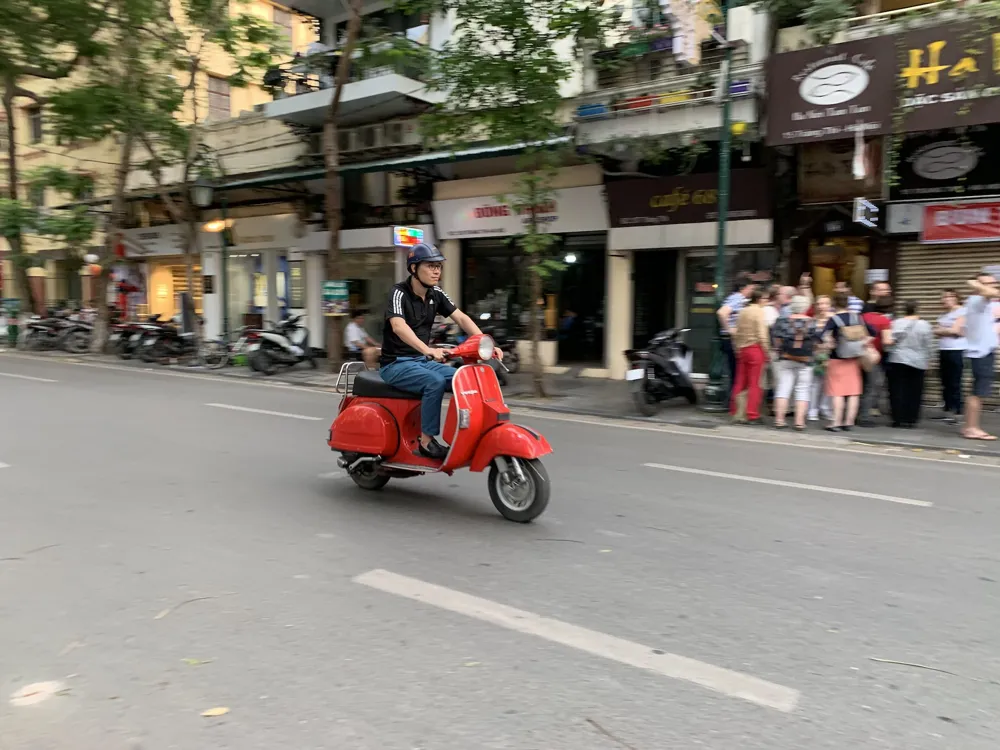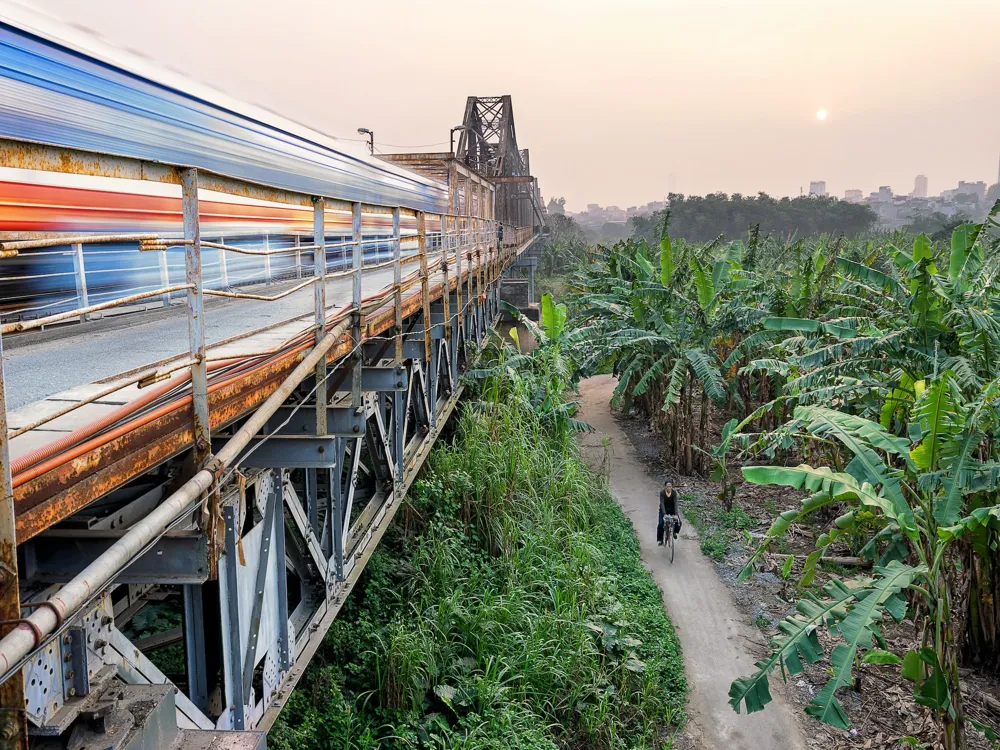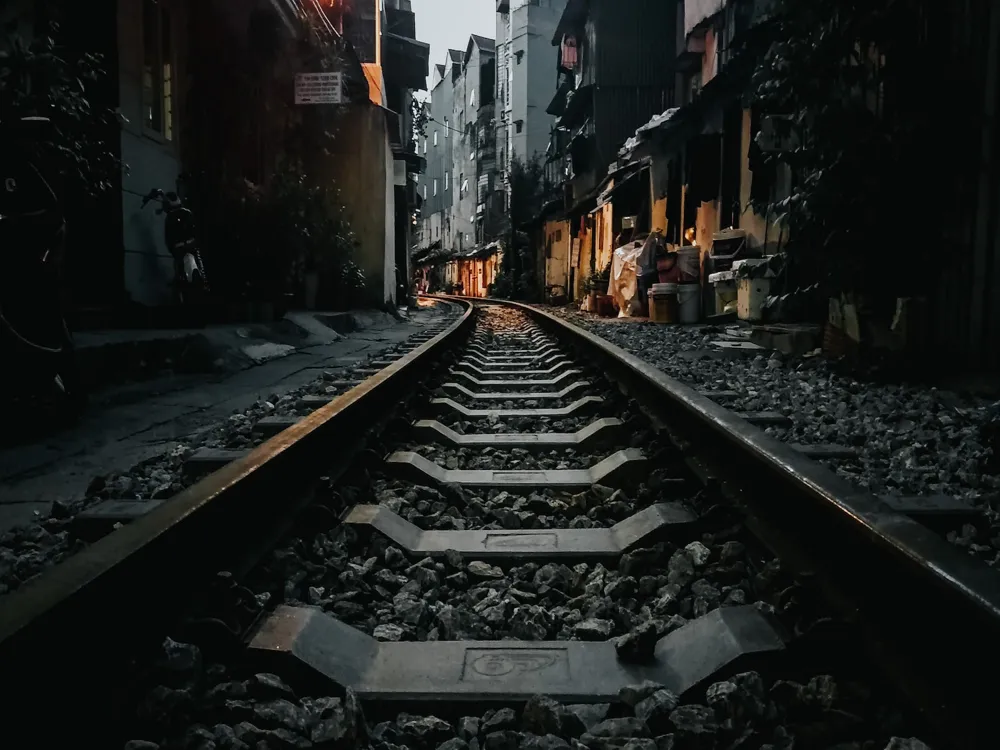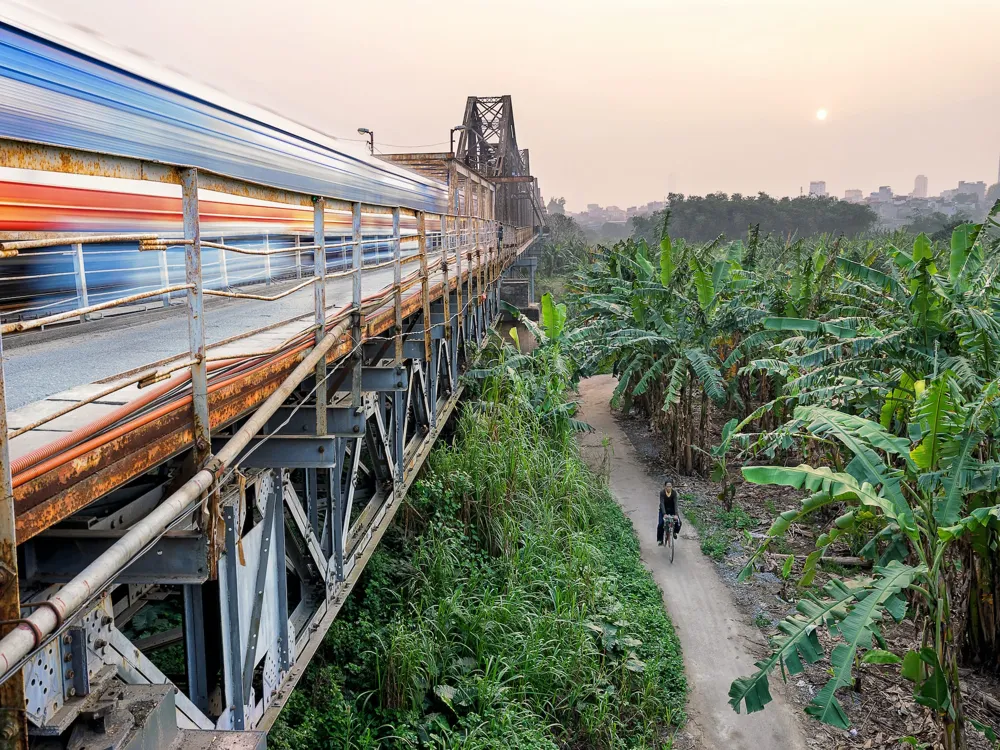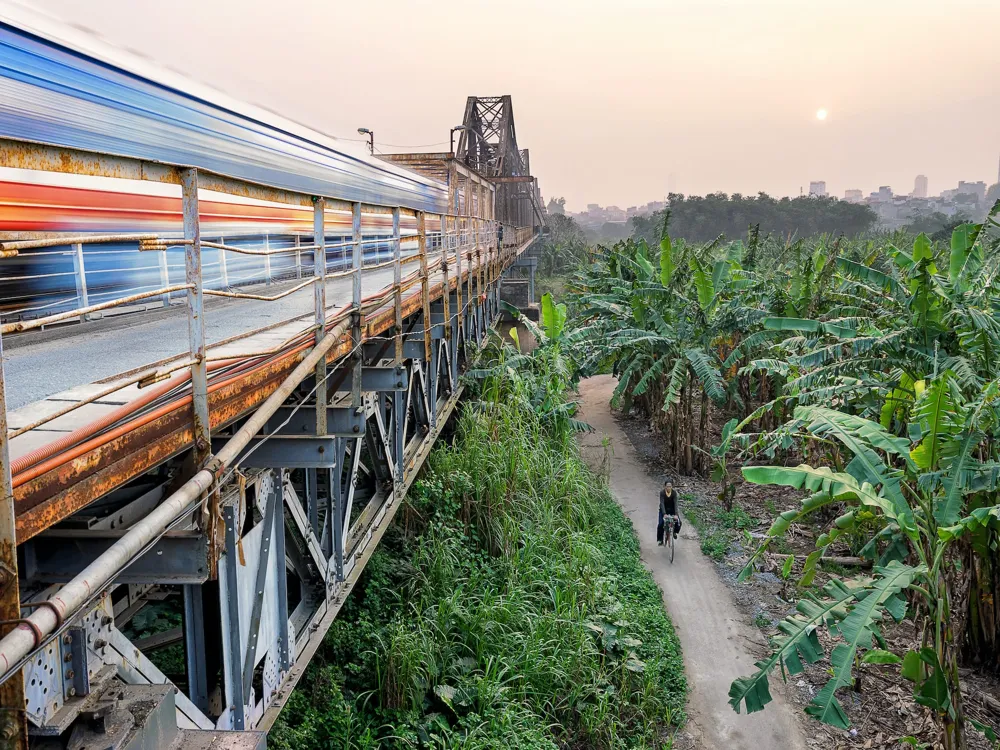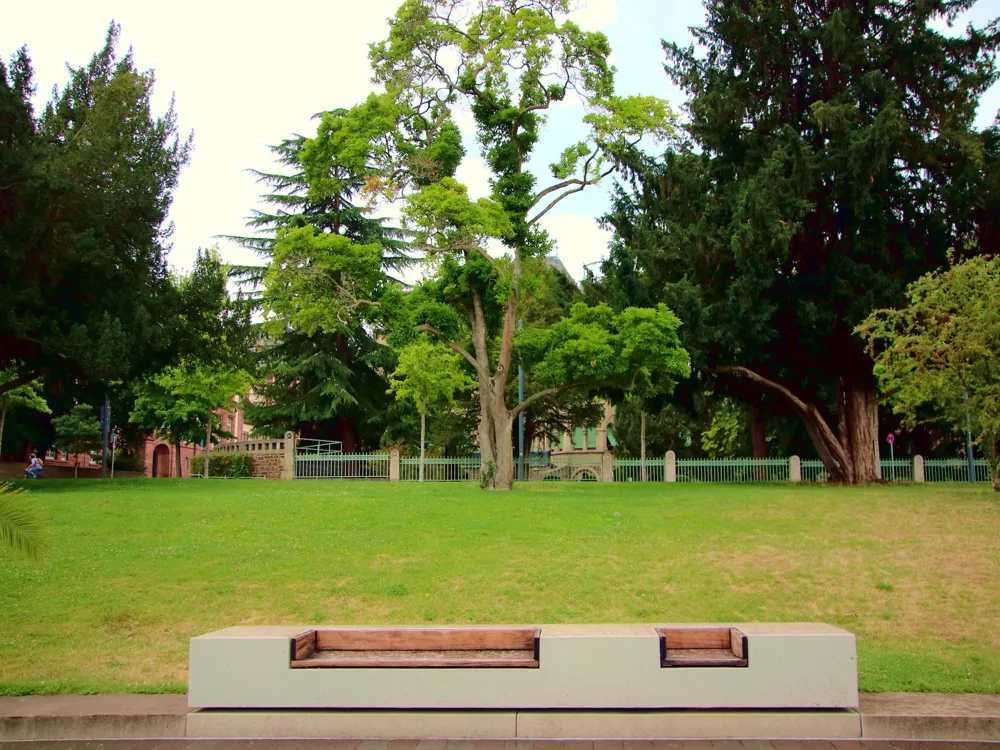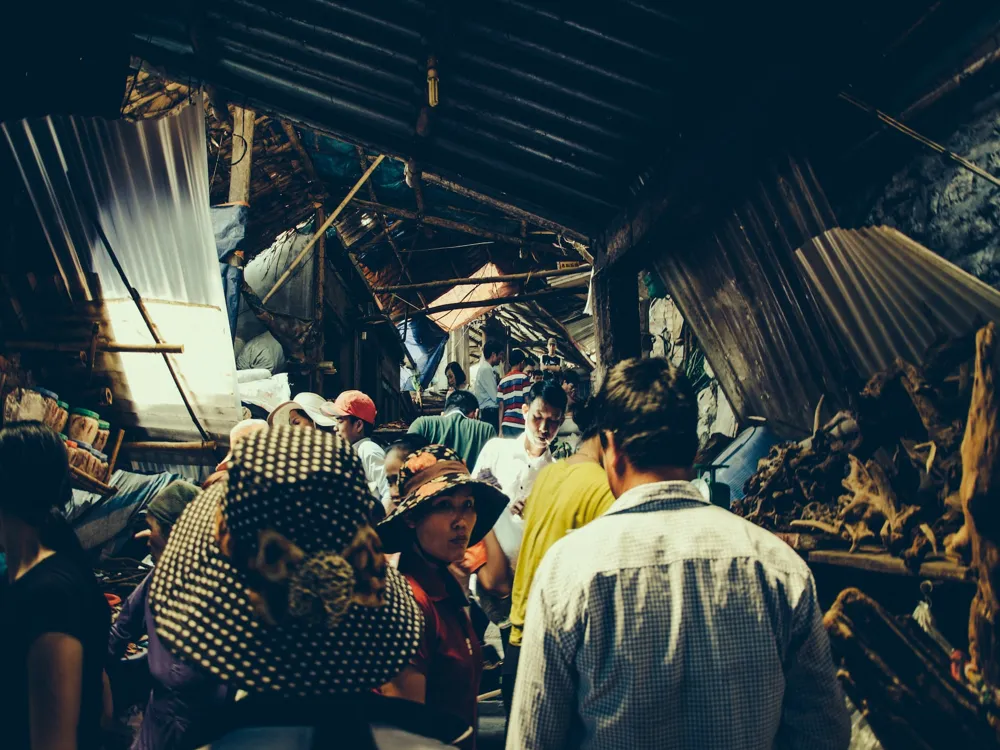Hanoi, the capital city of Vietnam, is a fascinating blend of East and West, combining traditional Sino-Vietnamese motifs with French flair. It's a city where the past coexists with the present; ancient temples stand near modern developments. Hanoi's heart is its Old Quarter, where narrow streets are named after the specific goods once sold there. The city not only boasts rich historical landmarks but also vibrant nightlife, delicious cuisine, and bustling markets. Hanoi's beauty lies in its unique blend of old-world charm and the energetic pace of modern life.
Hanoi, with its centuries-old architecture and a rich history that dates back over a thousand years, is a cultural tapestry. The city was established under the name ‘Thang Long’ in 1010 AD by Emperor Ly Thai To, and it has been an important political center ever since. Its history is marked by wars and colonialism, evident in its architecture and cultural landmarks. Despite the tumultuous past, Hanoi has preserved a unique cultural heritage that attracts visitors worldwide.
The city is not just about its urban charm; it's also known for its scenic lakes, lush parks, and verdant green spaces. Hoan Kiem Lake, located in the city's center, is a symbol of serenity amidst the hustle and bustle. The lake is surrounded by ancient temples and shaded pathways, making it a popular spot for both tourists and locals looking for tranquility.
Hanoi's architecture is a testament to its rich history and cultural influences. From ancient temples and pagodas to French colonial buildings and modern skyscrapers, the city's skyline tells the story of a place that has evolved while maintaining its cultural essence. This architectural mix offers a unique visual experience and reflects the city’s resilience and adaptability through different historical periods.
The city's historical architecture is dominated by Sino-Vietnamese influences, visible in the Old Quarter's traditional tube houses and ancient temples. The Temple of Literature, founded in 1070, is a prime example of traditional Vietnamese architecture and is dedicated to Confucius. The Imperial Citadel of Thang Long, a UNESCO World Heritage site, is another significant historical landmark, offering insights into Hanoi's rich past.
The French colonial period left a significant mark on Hanoi's architecture. The French introduced European-style buildings, wide boulevards, and tree-lined streets. The Hanoi Opera House, inspired by the Paris Opera House, and St. Joseph’s Cathedral, reminiscent of Notre Dame de Paris, are notable examples of French architectural influence. These buildings not only add to the city's charm but also represent an important era in Vietnamese history.
Visiting Hanoi is an adventure of a lifetime. To make the most of your trip, it's important to keep in mind some essential tips. From navigating the bustling streets to exploring the cultural heritage, these tips will help you enjoy Hanoi to its fullest.
Respect local customs and traditions. Dress modestly when visiting temples and religious sites. Learn a few basic Vietnamese phrases to interact with locals.
Hanoi's traffic can be overwhelming. Be cautious when crossing streets and consider using ride-hailing apps for convenience. Public transportation is also a good way to explore the city.
Hanoi is a food lover's paradise. Don't miss trying the famous Pho, Bun Cha, and other local delicacies. Street food tours are a great way to experience the local cuisine.
The Old Quarter is the best place for shopping. Bargain respectfully and be cautious of counterfeit goods. Traditional handicrafts, silk products, and coffee are popular souvenirs.
Reaching Hanoi is quite straightforward. The city is well-connected internationally and domestically, offering various options for travelers. Whether you're flying in, taking a train, or traveling by bus, getting to Hanoi is convenient and accessible.
The Noi Bai International Airport, located about 35 km from the city center, is the main gateway for international travelers. It serves numerous airlines and has direct flights from major cities around the world. From the airport, you can take a taxi, bus, or private car to reach the city center.
For travelers coming from other parts of Vietnam, the train is a scenic and comfortable option. Hanoi’s main railway station connects to various cities, providing a unique way to see the Vietnamese countryside.
Buses are another popular means of reaching Hanoi. The city has several bus stations with extensive networks, making it easy to travel from nearby provinces or even from neighboring countries.
Discover the Enchanting City of Hanoi
The Heart of Vietnamese Culture
Natural Beauty and Serenity
Architectural Wonders of Hanoi
A Glimpse into Hanoi's Past: Historical Architecture
French Colonial Influence
Tips for an Unforgettable Hanoi Experience
Understanding the Local Culture
Navigating the City
Food and Cuisine
Shopping and Souvenirs
Traveling to Hanoi: A Simple Guide
By Air
By Train
By Bus
Bat Trang Pottery Village
Hanoi
₹ 15,260 onwards
View hanoi Packages
Hanoi Travel Packages
View All Packages For Hanoi
Top Hotel Collections for Hanoi

Private Pool

Luxury Hotels

5-Star Hotels

Pet Friendly
Top Hotels Near Hanoi
Other Top Ranking Places In Hanoi
View All Places To Visit In hanoi
View hanoi Packages
Hanoi Travel Packages
View All Packages For Hanoi
Top Hotel Collections for Hanoi

Private Pool

Luxury Hotels

5-Star Hotels

Pet Friendly







